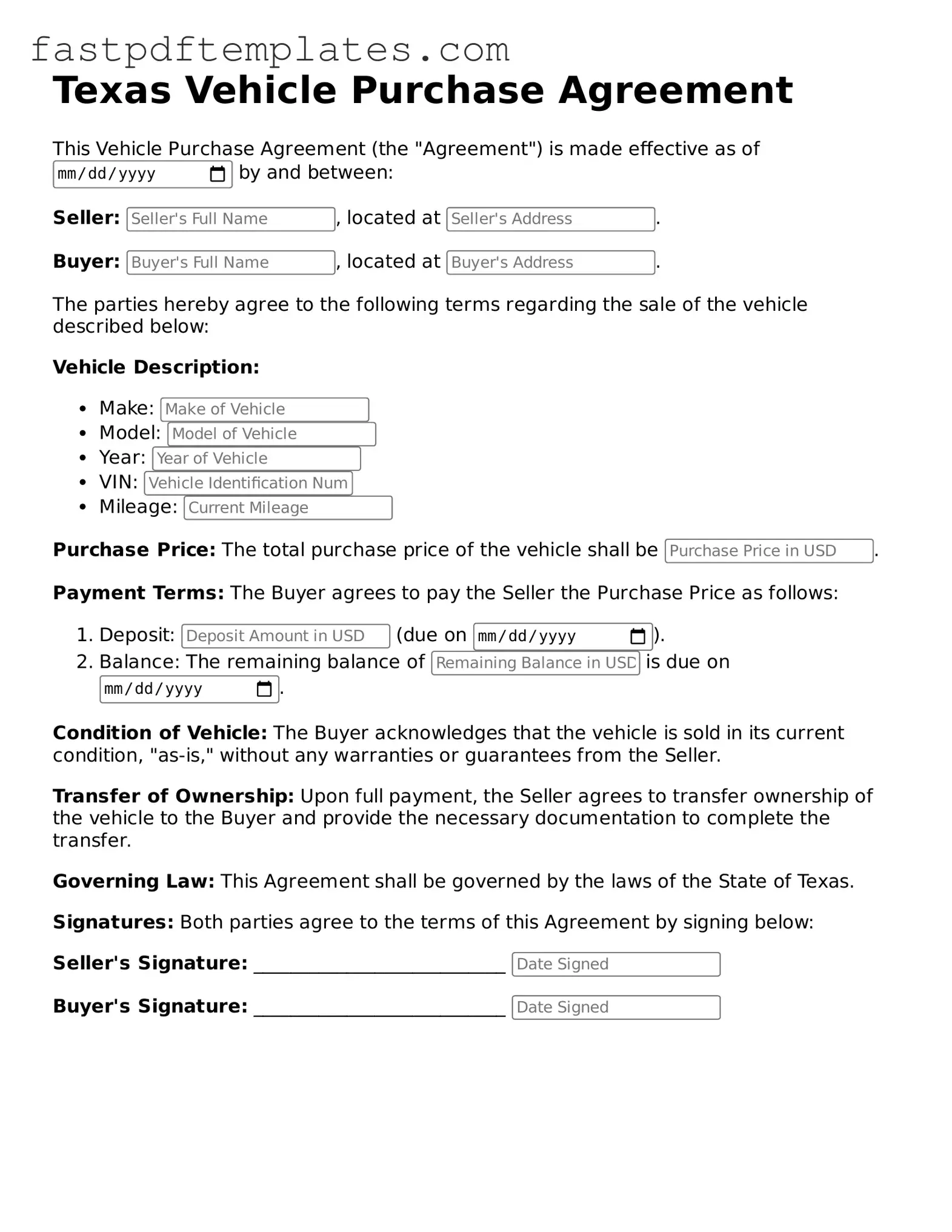The Bill of Sale is a document that serves as proof of the transfer of ownership of a vehicle from the seller to the buyer. Like the Texas Vehicle Purchase Agreement, it includes details about the vehicle, such as the make, model, year, and Vehicle Identification Number (VIN). Both documents require signatures from both parties to validate the transaction and can be used for registration purposes.
The Purchase Agreement is similar in nature to the Vehicle Purchase Agreement, as it outlines the terms and conditions of a sale. This document can apply to various types of goods, not just vehicles. It typically includes the purchase price, payment terms, and any warranties or guarantees, much like the vehicle-specific agreement.
The Lease Agreement is another document that shares similarities with the Texas Vehicle Purchase Agreement. While a lease pertains to renting a vehicle rather than purchasing it, both documents detail the terms of use. They specify responsibilities, payment amounts, and duration, which helps protect the rights of both parties involved.
The Title Transfer form is crucial in vehicle transactions. It is similar to the Vehicle Purchase Agreement because it formally transfers ownership from the seller to the buyer. This document is essential for registering the vehicle in the new owner's name and must be completed accurately to avoid future complications.
The Odometer Disclosure Statement is often required during vehicle sales. This document ensures that the buyer is informed about the vehicle's mileage at the time of sale. Like the Texas Vehicle Purchase Agreement, it helps protect both parties by providing clear information and preventing fraud regarding the vehicle's condition.
The Financing Agreement is relevant when a buyer seeks a loan to purchase a vehicle. This document outlines the loan terms, including interest rates and payment schedules. Similar to the Vehicle Purchase Agreement, it involves both the buyer and lender, ensuring all parties understand their obligations in the transaction.
The Warranty Deed may not seem directly related to vehicle purchases, but it shares the concept of transferring ownership. This document is typically used in real estate transactions, but like the Vehicle Purchase Agreement, it requires clear identification of the property and the parties involved, ensuring a legal transfer of ownership.
The Insurance Policy is essential for vehicle ownership and is similar to the Vehicle Purchase Agreement in that it protects the buyer's investment. Both documents require accurate information about the vehicle and the parties involved. An insurance policy provides coverage against potential damages or losses, ensuring financial security for the owner.
The Consumer Credit Disclosure is a document that outlines the terms of credit extended to a buyer. It is similar to the Vehicle Purchase Agreement in that it provides transparency about financial obligations. Both documents ensure that buyers are aware of their responsibilities and the terms of their purchase or loan.
The Promissory Note is a financial document that signifies a promise to pay a certain amount. It is similar to the Vehicle Purchase Agreement when financing is involved. Both documents outline the terms of payment and can serve as legal evidence of the buyer's commitment to fulfilling their financial obligations.
